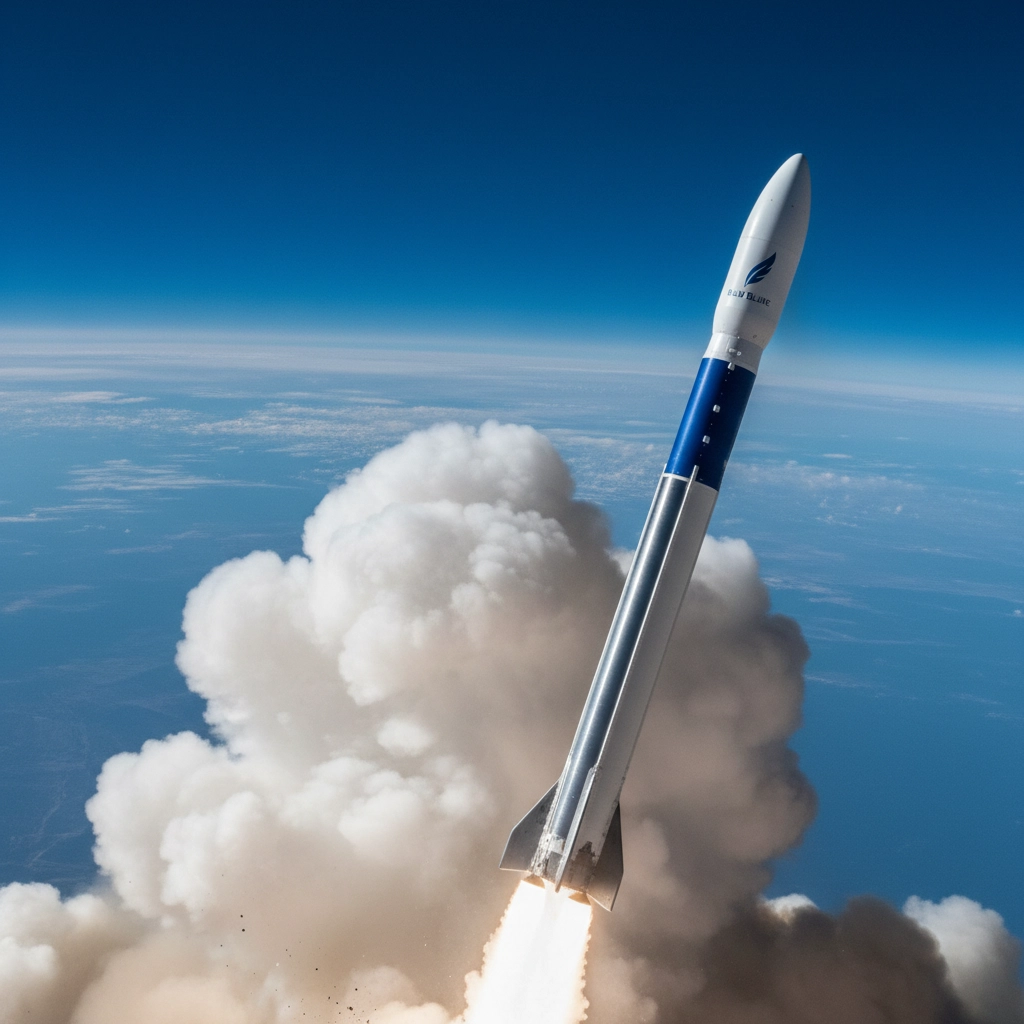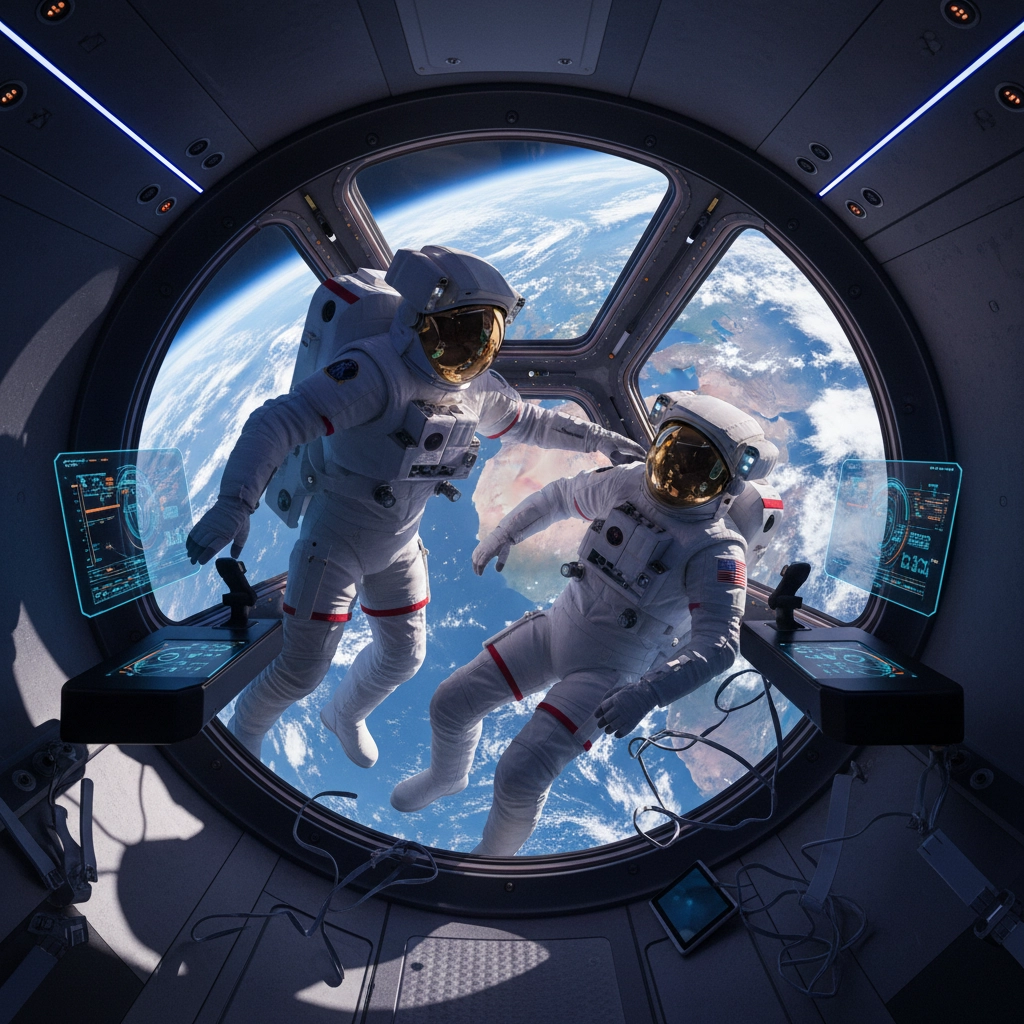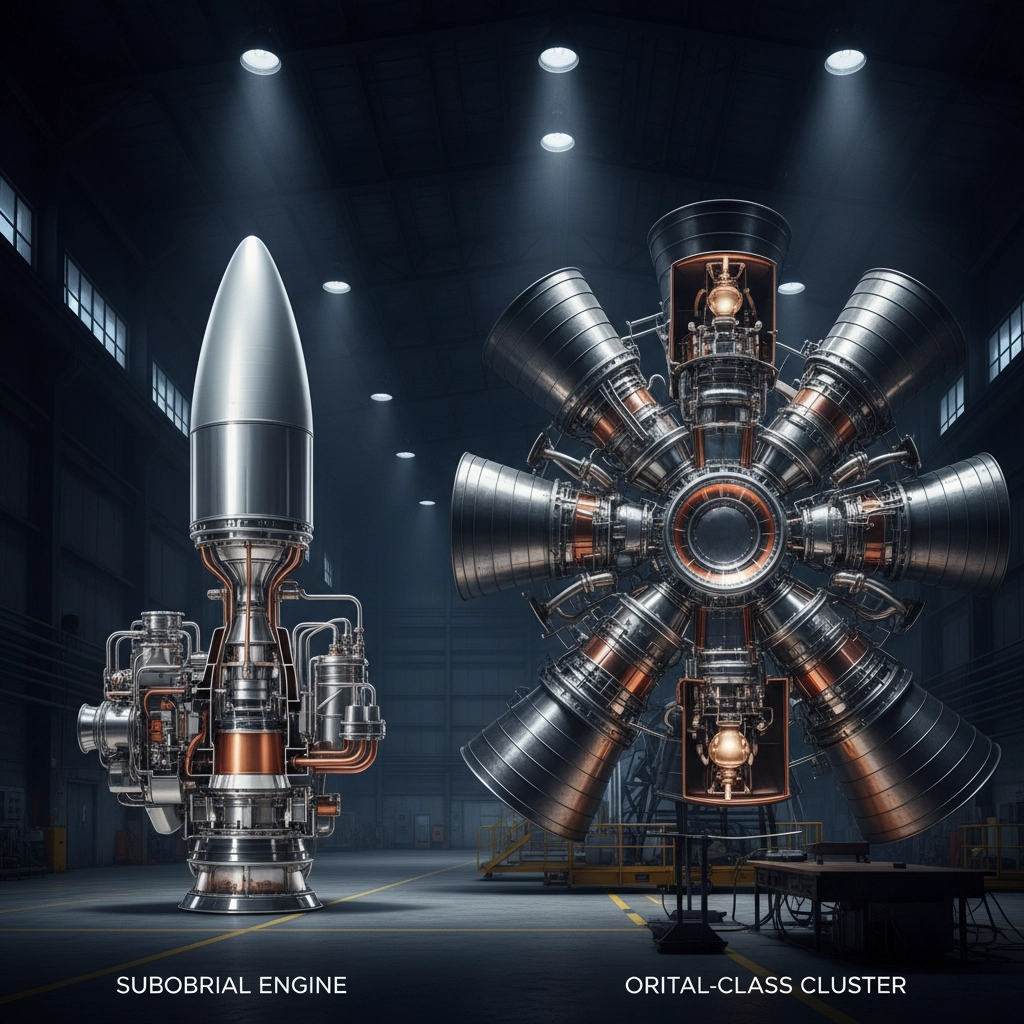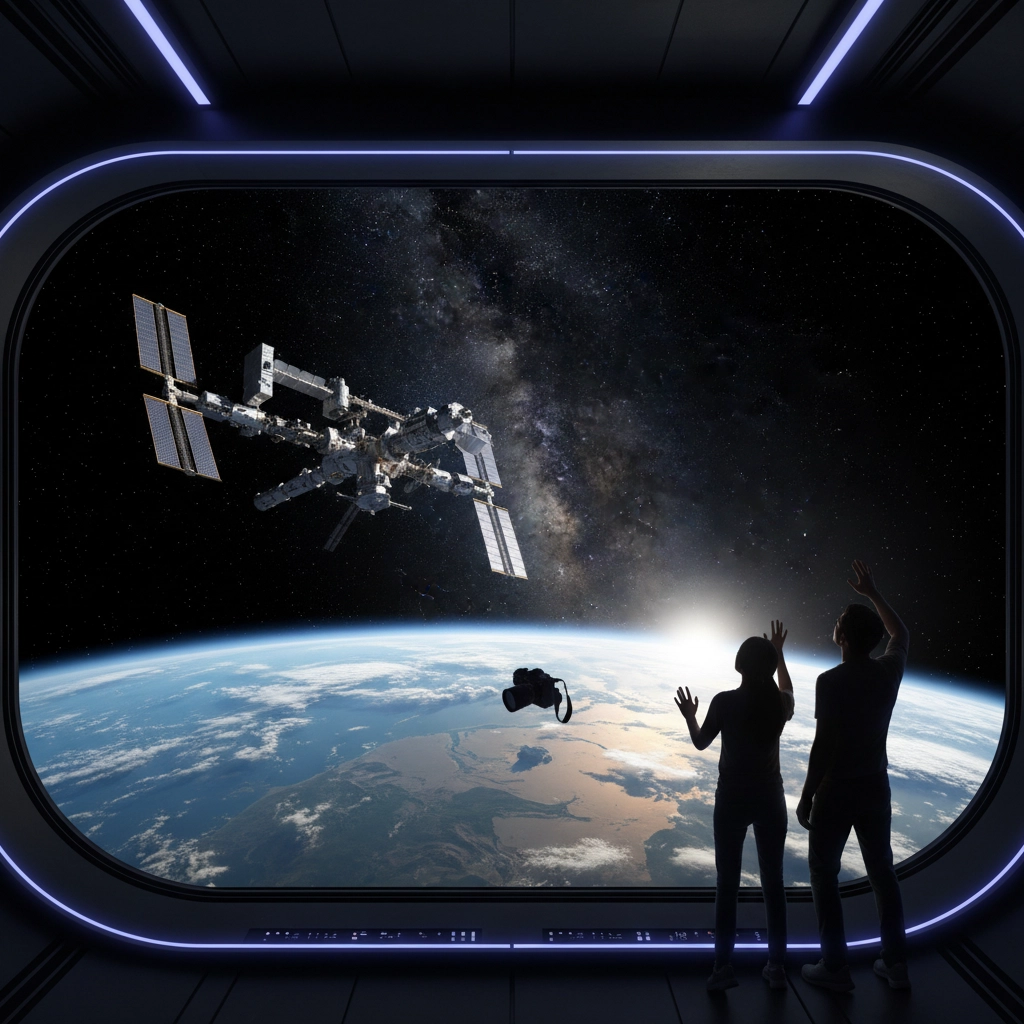Have you ever gazed up at the stars and wondered what it would cost to actually get there? Maybe you’ve caught yourself daydreaming during a particularly long Monday meeting, imagining floating weightless among the cosmos instead of stuck in yet another quarterly review. Well, here’s some exciting news: space travel isn’t just for astronauts anymore, and in 2025, there are more ways than ever to turn that cosmic dream into reality.
The price of a ticket to space varies dramatically – from around $200,000 for a quick hop to the edge of space, all the way up to $70 million for an extended orbital adventure with a stay at the International Space Station. But before you start checking your savings account (or contemplating a very large loan), let’s break down exactly what you get for your money and why these experiences come with such different price tags.
The “Affordable” Option: Suborbital Adventures
Let’s start with what the space tourism industry considers its entry-level offerings – though “entry-level” might be a relative term when we’re talking about hundreds of thousands of dollars.
Blue Origin currently offers the most accessible path to space, with tickets ranging from $200,000 to $300,000. Their New Shepard rocket carries passengers just past the Kármán line – that’s 100 kilometers above Earth’s surface, the official boundary where space begins. The experience is brief but unforgettable: several minutes of weightlessness, jaw-dropping views of Earth’s curvature, and the life-changing perspective that astronauts call the “overview effect.”

Virgin Galactic takes a different approach with their spaceplane technology, charging approximately $450,000 per seat, with some reports suggesting prices could reach $600,000 when commercial operations fully resume in 2026. What makes Virgin Galactic unique is their runway-to-runway experience – you’ll take off like a conventional aircraft, rocket to space, enjoy those precious minutes of weightlessness, then glide back to a smooth landing. It’s like the ultimate scenic flight, except the scenery happens to be the entire planet.
For those who prefer a more leisurely pace, companies like Space Perspective and World View are developing high-altitude balloon experiences starting around €45,000 (roughly $48,000). While these won’t technically cross into space, they offer six hours of incredible views from the edge of the atmosphere – think of it as the world’s most exclusive observation deck.
Going the Distance: Orbital Space Tourism
Now, if suborbital feels too brief for your space ambitions, orbital missions offer the full astronaut experience – but at a significantly higher cost. We’re talking about the difference between dipping your toe in the cosmic ocean versus diving in headfirst.
SpaceX charges approximately $55 million per seat for missions aboard their Crew Dragon capsule. These aren’t quick up-and-down trips – you’re looking at several days in orbit, potentially including visits to the International Space Station. You’ll experience what it’s truly like to live in microgravity, watch multiple sunrises and sunsets each day, and maybe even conduct some scientific experiments alongside professional astronauts.

Axiom Space organizes private missions to the ISS with costs reaching up to $70 million for a single seat. The average price for private orbital missions between 2020-2025 sits around $50 million per seat. To put this in perspective, the entire Inspiration4 mission in 2021, which sent four civilians on a three-day orbital journey, cost sponsor Jared Isaacman an estimated $200 million.
These orbital experiences include extensive training programs, multiple days floating in zero gravity, and the incredible opportunity to live and work in the same environment as career astronauts. Plus, if you’re staying on the ISS itself, that comes with its own price tag: $35,000 per night for private astronauts.
Why Such Dramatic Price Differences?
You might be wondering why there’s such a massive gap between a $300,000 suborbital flight and a $50 million orbital mission. The answer lies in the physics of space travel and what rocket scientists call the “tyranny of the rocket equation.”
Getting to the edge of space and coming straight back down is challenging enough, but reaching orbital velocity – the speed needed to continuously circle Earth rather than just touching space and falling back – requires approximately 30 times more energy. It’s the difference between throwing a ball up in the air versus launching it fast enough to orbit around you forever.

Orbital missions also demand significantly more infrastructure:
Extensive training programs that can last weeks or months, compared to a few days for suborbital flights. You’ll need to learn how to live, work, eat, and even sleep in microgravity.
Advanced life support systems for extended duration missions, because spending days in space requires much more sophisticated environmental controls than a few minutes.
Docking capabilities with space stations, which involves incredibly precise maneuvering and complex safety protocols.
Re-entry technology capable of surviving the intense heat of returning from orbital velocities – much more demanding than the gentler return from suborbital flights.
International coordination for ISS access, involving multiple space agencies and complex scheduling that must be planned months or years in advance.
The Current State of Space Tourism
The global space tourism market in 2025 is valued somewhere between $1.3 to $1.6 billion, depending on which analysis you reference. While that might sound substantial, it’s still a relatively niche market – for context, the global cruise industry is worth over $150 billion. However, projections suggest space tourism could grow to over $13 billion by 2030, indicating we’re still in the very early stages of what could become a much larger industry.
But here’s the reality check: flights remain relatively infrequent. Blue Origin conducts New Shepard missions sporadically throughout the year. Virgin Galactic has temporarily paused operations to develop their next-generation Delta-class spaceplanes, with commercial flights expected to resume in 2026. Axiom’s orbital missions must be scheduled months or even years in advance due to the complex logistics of coordinating with the International Space Station.

What’s Included in These Prices?
Before you start calculating loan payments, it’s worth understanding what these astronomical price tags actually cover. For suborbital flights, you’re typically getting:
- Several days of pre-flight training and preparation
- The flight experience itself, including those precious minutes of weightlessness
- Professional medical screening and ongoing health monitoring
- Flight suit and other necessary equipment
- Post-flight celebration (because you’ll definitely want to celebrate becoming an astronaut)
Orbital missions include all of the above plus:
- Weeks or months of intensive astronaut training
- Multiple days living in space
- All meals and accommodation while in orbit
- The chance to participate in scientific experiments
- Professional photography and videography of your experience
Looking Toward the Future
While space tourism in 2025 remains firmly in the realm of the ultra-wealthy, the landscape is rapidly evolving. Companies are working to reduce costs through reusable technology, increased flight frequency, and operational improvements. The average budget currently sits at approximately $250,000, though this figure only encompasses the lower end of suborbital offerings.
What’s particularly exciting is how quickly this industry has developed. Just two decades ago, Dennis Tito paid $20 million to become the first space tourist, and that was considered revolutionary. Today, we have multiple companies offering civilian space experiences, with more entering the market regularly.

The Bottom Line: Is It Worth It?
For most people, space tourism remains a distant dream due to the current pricing. However, every astronaut who has experienced the overview effect – that profound shift in awareness that comes from seeing Earth from space – describes it as life-changing in ways that are difficult to quantify.
We’re living through a remarkable transition period where space travel is evolving from something exclusively for government-trained astronauts to an experience that private citizens can pursue. While the costs remain astronomical (pun intended), the mere fact that these options exist represents an incredible achievement in human capability and ambition.
The question isn’t really whether space tourism is “worth it” in a traditional sense – it’s whether the experience of seeing Earth from the perspective that only a few hundred humans in all of history have enjoyed is worth the investment to those who can afford it. And based on the consistent reports from space tourists about how profoundly the experience affects them, the answer seems to be a resounding yes.
As technology improves and competition increases, these prices will inevitably come down. Who knows? Maybe in another decade, we’ll be talking about space tourism the way we discuss international air travel today – still a significant expense, but accessible to a much broader range of people with a sense of adventure and a desire to explore beyond the boundaries of our world.
Want to know how RocketBreaks is leading the way? Check out our story: Pioneers in Luxury Space Tourism
